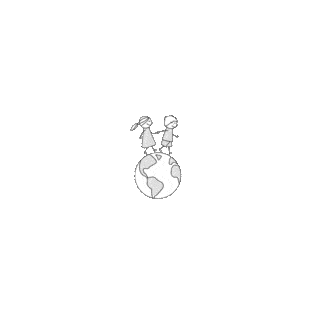Babies
How to Dress a Baby According to the Weather
Guillaume Dls

Are you a new parent? If so, you will know how hard it can be to decide how to dress a baby when you plan to go outside.
Don't worry though! To give you a hand, we've put together this little guide that will mean you can go out for a walk with peace of mind.
Here's how to dress your baby for the outdoors according to each season.
Going Out in Winter with Your Baby

Winter can be a time of great cold and snowstorms, but some days can be mild and sunny. Since the weather can vary from day to day, we recommend protecting your baby from the cold using the "layering technique" (also known as the " onion layering system ").
By layering your baby's clothing, you'll always be able to adjust his/her level of protection. Just stay alert to changes in temperature and your baby's reactions.
The most important thing to do is to start protecting the extremities of your baby's body, where the risk of frostbite is greatest. His/her ears, hands, and feet should be well covered.
What Winter Clothes Should My Baby Wear?
-
Head/neck: A knitted toque (or cap) that ties under the chin to prevent it from moving around too much. To protect the neck, a knitted neck warmer will work well. It is best to avoid scarves for babies because they can be a choking hazard;
-
Upper body/legs: When it comes to snowsuits, you have many choices: 1-piece, 2-piece, with or without mittens, with or without integrated boots, etc. Choose what suits you best. Underneath this snowsuit, we recommend that you add two additional layers of clothing:
-
A first layer to wick away moisture and keep the body dry, perhaps a camisole, a polyester sweater, or a thermal suit. Choose polyester over cotton (which retains moisture).
-
A second layer with a warm fleece or sweater.
-
If your baby gets too hot, just remove a diaper along the way.
What’s the trick to knowing how many layers your baby should wear in the winter? Have him wear one more layer than you wear yourself.
-
Hands and feet: Since these are the extremities that get cold the fastest and a baby is not able to move to keep warm, it is important to protect his/her feet and hands from the cold. Consider having your baby wear warm socks (such as merino wool), a good pair of mittens, and padded boots.
Here are our suggestions for winter accessories for baby girls and winter accessories for baby boys.
For snowsuits:
What Temperature Is Too Cold for My Baby?
The Institut National de Santé Publique du Québec indicates that it is perfectly acceptable to take a baby outside when the temperature "seems reasonable". With the right clothing, there should be no problem. For example, at Deux par deux, we make snowsuits that are resistant to -30°C (-22°F).
You should also make sure that the wind is not too strong, as it can increase the risk of frostbite.
For your first winter walks, it is recommended that you do not take your baby out for more than 20 to 30 minutes. First test how your baby reacts to a short walk, then gradually increase the length of your outings.
If necessary, readjust the number of layers your baby wears.
Dressing Your Baby in Spring

Spring is a little more complicated because the weather is even more changeable. Some days the temperature is mild - it feels like summer - and some days it feels like winter.
Just like in winter, "multi-layering" can be an interesting approach because it allows you to react quickly if you notice that your toddler is too hot (or too cold).
If your baby is too hot, he may sweat excessively to regulate his/her temperature, and because of the humidity created, your baby may catch a cold.
An outfit made especially for spring will have the ability to let his/her body breathe better.
How to Dress Baby in Spring?
-
Head/neck: a lightweight cap with a neck warmer;
-
Upper body: a spring suit that allows just enough air to pass through, so as to avoid excessive sweating. Underneath, a simple sweater that can be accompanied by a cotton jacket;
-
Legs: warm pants for cooler days and light pants for warmer days (as summer approaches);
-
Hands: keep a pair of gloves/mittens nearby, in case the air gets cooler;
-
Feet: Carry two pairs of socks. One warmer and one lighter. With that: not too warm shoes and/or rain boots (in case of threatening clouds).
Here are our suggestions for spring clothes for baby boys and spring clothes for baby girls.
Summer Clothes

In hot summer weather, be careful not to overdress your baby. A camisole and light pants may be sufficient for very hot days.
If the sun is strong, be sure to dress your baby in light colors, as these absorb less sunlight than darker colors.
What Temperature Is Too Hot for My Baby?
Above 30-32°C (or 90°F), you should stay home with your baby, especially if she is a newborn.
When the weather allows you to go for a walk, start with a short 20-30 minute outing to test his/her reactions.
One way to tell if your baby is too hot is to touch the back of his/her neck. If it's wet, you should remove a layer of clothing or move him out of the sun.
Recommended Summer Clothes for Baby
-
Head: a hat or cap to protect from the sun's rays;
-
Upper body: a light-colored camisole or t-shirt (ideally white or pastel, as this will absorb less sunlight). For a baby under 6 months old, overalls or rompers will do the trick. However, for babies older than 6 months, it is no longer essential to have such thick clothes. It may even be a little too warm (unless it's a cool summer day);
-
Legs: if you don't have him wear overalls, a pair of light pants, shorts, or a little dress will do the trick;
-
Feet: running shoes or shoes with fairly thin socks.
Here are our suggestions for summer clothes for babies.
Fall Clothing

Just like in spring, fall temperatures are changeable. Sometimes there will be freezing days, then warmer days, then cold weather returns... All sorts of weather are possible in spring.
To prevent your baby from getting stuck wearing clothes that are too warm or too cold on a walk, we again recommend layering.
Layering several thin layers on top of each other will allow you to add or remove some as the day goes on.
How to Dress a Baby in Autumn?
-
Head/neck: Keep a hat and neck warmer handy. If it's a cold day, don't hesitate to put them on as soon as you leave the house;
-
Upper body: a small windbreaker or hooded raincoat (on rainy days) is a must. We will replace the small light summer t-shirt with a long-sleeved t-shirt with (if necessary) a sweater or a cardigan;
-
Legs: jogger pants, overalls, or wool tights (if your baby is wearing a dress);
-
Hands: keep a small pair of mittens handy in case the weather gets chilly.
-
Feet: rain shoes or boots, with thick socks.
Here are our suggestions for fall clothing for babies.
The Most Important Thing: Avoid Thermal Shock and Extreme Temperatures
The most important thing is to avoid your baby being too hot or too cold and to prevent him from going from one temperature to another too quickly.
For this reason, it is very important to have appropriate clothing available to you that will keep him warm in cold temperatures and let his/her body breathe in warmer temperatures.
In winter, make sure to protect your baby from frostbite. In the summer, remember to protect him from sunstroke by not covering him up too much.
Above All: Stay Flexible!
Beyond these tips, remember to observe the different reactions of your baby. Each baby is different, and what is good for one will not necessarily be good for another.
Learning how to dress your baby to go outside is above all about getting to know him/her better, discovering his/her language, his/her mimics, and knowing how to adapt to him/her. Of course, in the beginning, it can take a little time.
So don't panic! It's normal if you don't find the perfect formula immediately.
Have a good walk!

